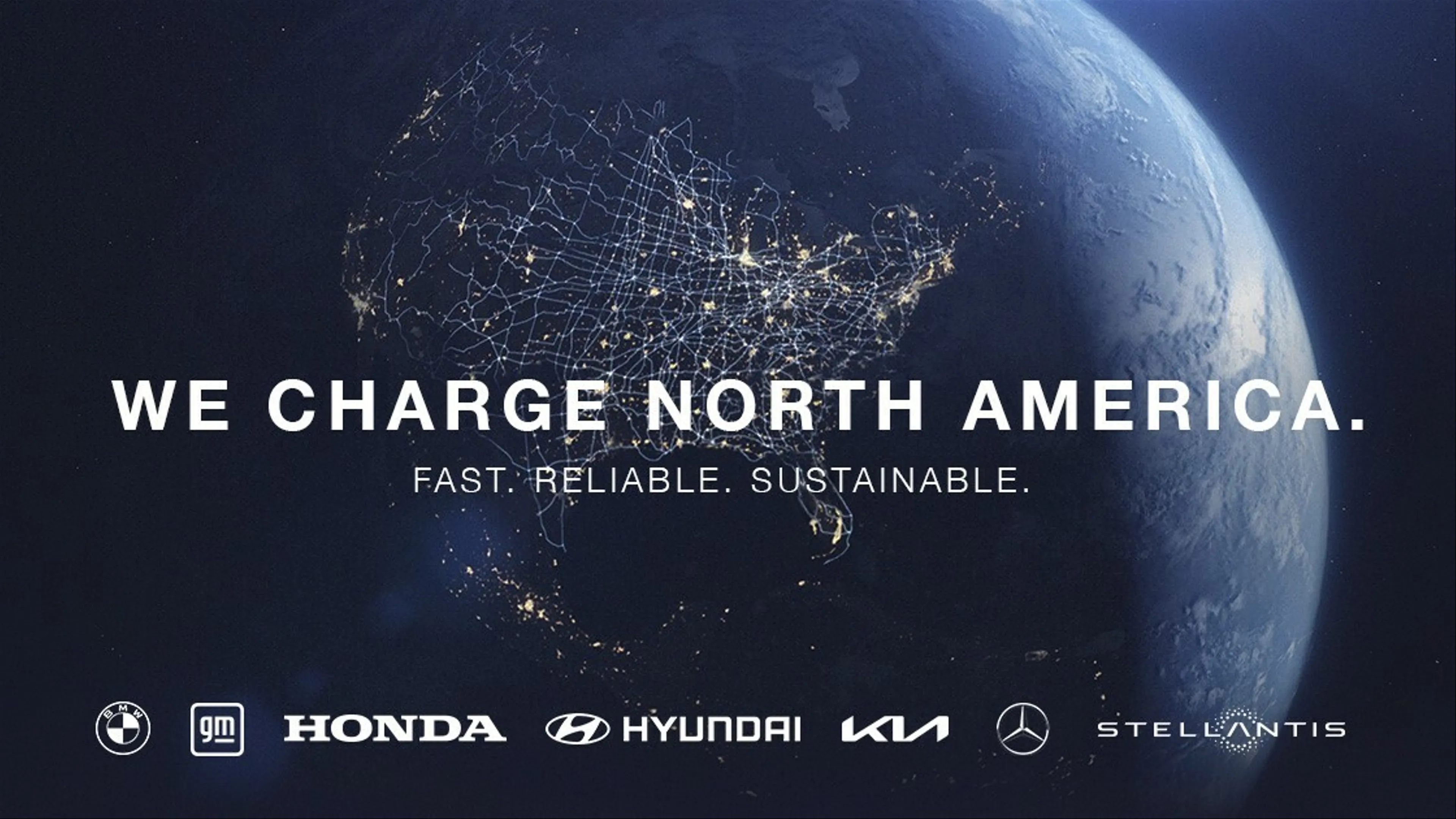Tesla Superchargers may be the undisputed champion of EV charging networks in the US at the moment, but seven major automakers have teamed up to develop their own network, which will launch in the US in summer 2024 and Canada at a later date.
The new network from BMW Group, General Motors, Honda, Hyundai, Kia, Mercedes-Benz Group, and Stellantis NV will bring at least 30,000 fast chargers to "metropolitan areas and along major highways, including connecting corridors and vacation routes, aiming to offer a charging station wherever people may choose to live, work and travel," according to a joint press release.
The stated goal is to facilitate electric vehicle adoption, with an unspoken implication that it's time to offer drivers a Supercharger alternative that's as reliable, expansive, and technologically advanced as Tesla's stations. The charging facilities built by the new venture will be integrated with these automakers' in-vehicle dash screens and mobile apps, allowing drivers to reserve chargers, find them along their route, pay for the session, and more. They will also be powered by all renewable energy.
Tesla Superchargers may be the undisputed champion of EV charging networks in the US at the moment, but seven major automakers have teamed up to develop their own network, which will launch in the US in summer 2024 and Canada at a later date.
The new network from BMW Group, General Motors, Honda, Hyundai, Kia, Mercedes-Benz Group, and Stellantis NV will bring at least 30,000 fast chargers to "metropolitan areas and along major highways, including connecting corridors and vacation routes, aiming to offer a charging station wherever people may choose to live, work and travel," according to a joint press release.
The stated goal is to facilitate electric vehicle adoption, with an unspoken implication that it's time to offer drivers a Supercharger alternative that's as reliable, expansive, and technologically advanced as Tesla's stations. The charging facilities built by the new venture will be integrated with these automakers' in-vehicle dash screens and mobile apps, allowing drivers to reserve chargers, find them along their route, pay for the session, and more. They will also be powered by all renewable energy.
The stations will have both Combined Charging System (CCS) and Tesla's North American Charging Standard (NACS) charging ports. In the past few months, multiple automakers announced plans to switch from building their vehicles with CCS ports to NACS ports in 2025, giving non-Tesla drivers access to Tesla Superchargers. Of the seven brands participating in the joint venture, two have announced they will build their vehicles with the NACS port starting in 2025: Mercedes and General Motors.
The others will continue building vehicles with CCS—for now. "At this time, we continue to evaluate the NACS standard and look forward to discussing more in the future," Stellantis tells PCMag.
It's unclear if the new initiative is a reaction to these brands switching to NACS, and an effort to preserve CCS as a standard port and avoid Tesla becoming even more dominant in the EV market. According to Honda spokesperson Chris Martin, these seven brands have been "working closely together for years as part of several projects with a high consensus between them how the future of High-Powered Charging should look like."
RECOMMENDED BY OUR EDITORS
Rivalries aside, more fast chargers will be needed to support growing EV adoption—no matter who builds them. The announcement notes that there are currently 32,000 publicly available fast chargers as of July 2023, according to the US Department of Energy. The US needs an estimated 182,000 to support expected adoption by 2030, when the Biden Administration has set a goal of having 50% of US new car sales from electric—a steep climb from today's
These EV charging stations will offer an "elevated customer experience," complete with food and retail options. A select few will be "equipped with additional amenities, delivering a premiere experience designed to showcase the future of charging," according to the press release, with more details to come.
